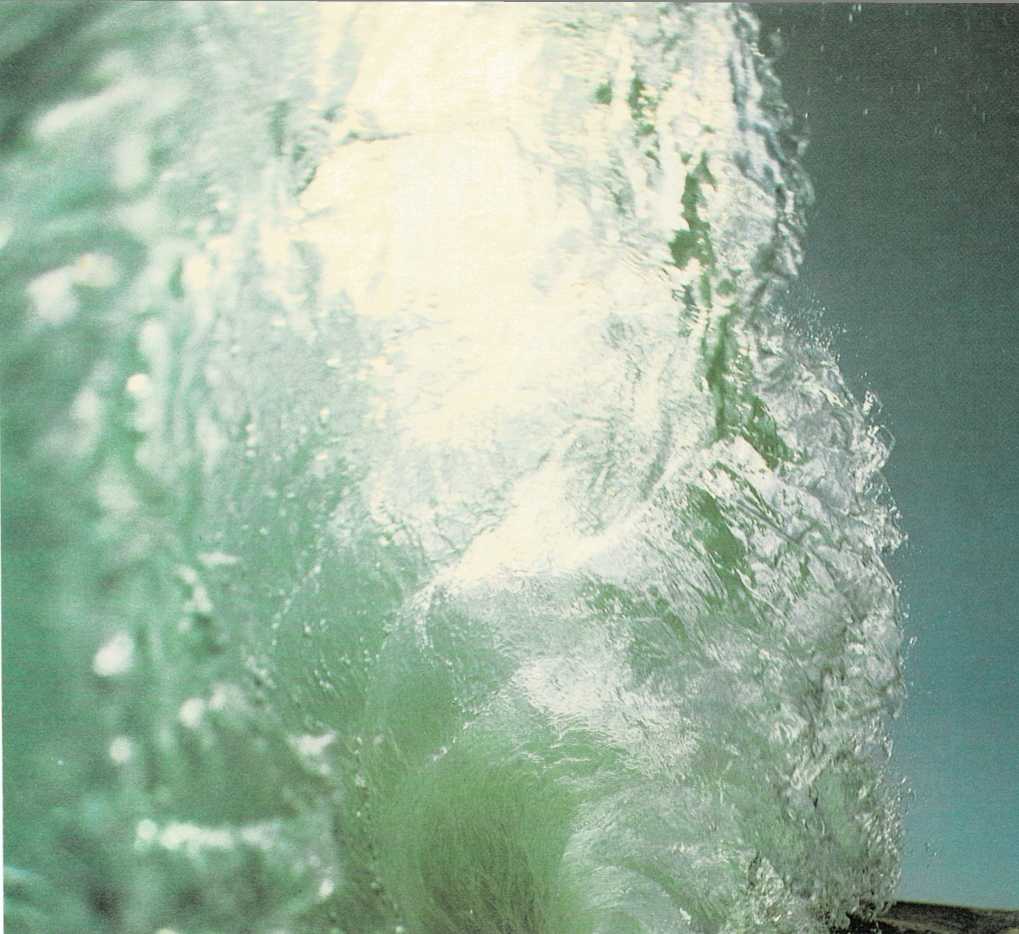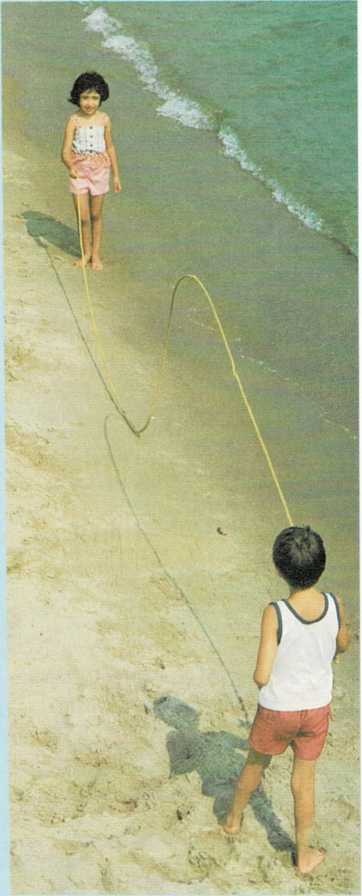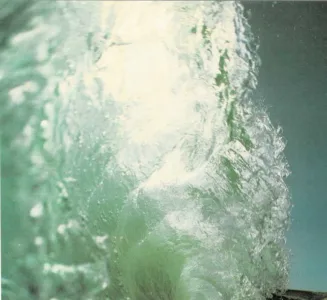Wind over the water
If you’ve ever read a poem or story about the sea, you’re sure to have
read about waves. If you’ve ever been to a seashore, you’ve seen waves
come rolling in to slap the sand with a splash. If you’ve been on the
sea, you’ve not only seen waves, you’ve gone up and down on them. But
what causes waves?

Fill a large bowl with water. Put your mouth close to the edge of the
bowl and blow gently across the surface of the water. You’ll see many
small waves go skimming over the surface of the water. The wind of your
breath caused the waves. Wind, passing over the water, is one of the
main reasons for waves on the sea.
Waves are also caused by underwater earthquakes and by the pull of
gravity of the moon and sun.
If you stand on the seashore on a windy day, watching the waves come
rolling toward you, you will get the feeling that the whole sea is
moving forward. But it isn’t, really. As the wind passes over the water,
it simply makes the top of the water sort of bob up and down. But the
water doesn’t move forward.
You can get an idea of how waves move by holding one end of a rope while
a friend holds the other end. Now jiggle your end of the rope. You will
see wave shapes pass along the rope toward your friend. But the rope
isn’t actually moving toward your friend. It can’t move forward,
because you’re holding it. Only the wave shapes are moving.
When an ocean wave nears the shore, the water at the lower part of the
wave begins to drag against the shallow bottom. As the wave slows down,
the water in back of it begins to pile up, making the wave higher. When
the water is shallow enough, the top of the wave spills over as a
breaker.
The top of a wave is called the crest. The curved distance between two
crests is called the trough (trawf).

Two children jiggle a rope to make a wave in it. The wave shape moves
along the rope, but the rope stays in place. A wave in water works the
same way. The shape moves forward, but the water only moves up and
down.

